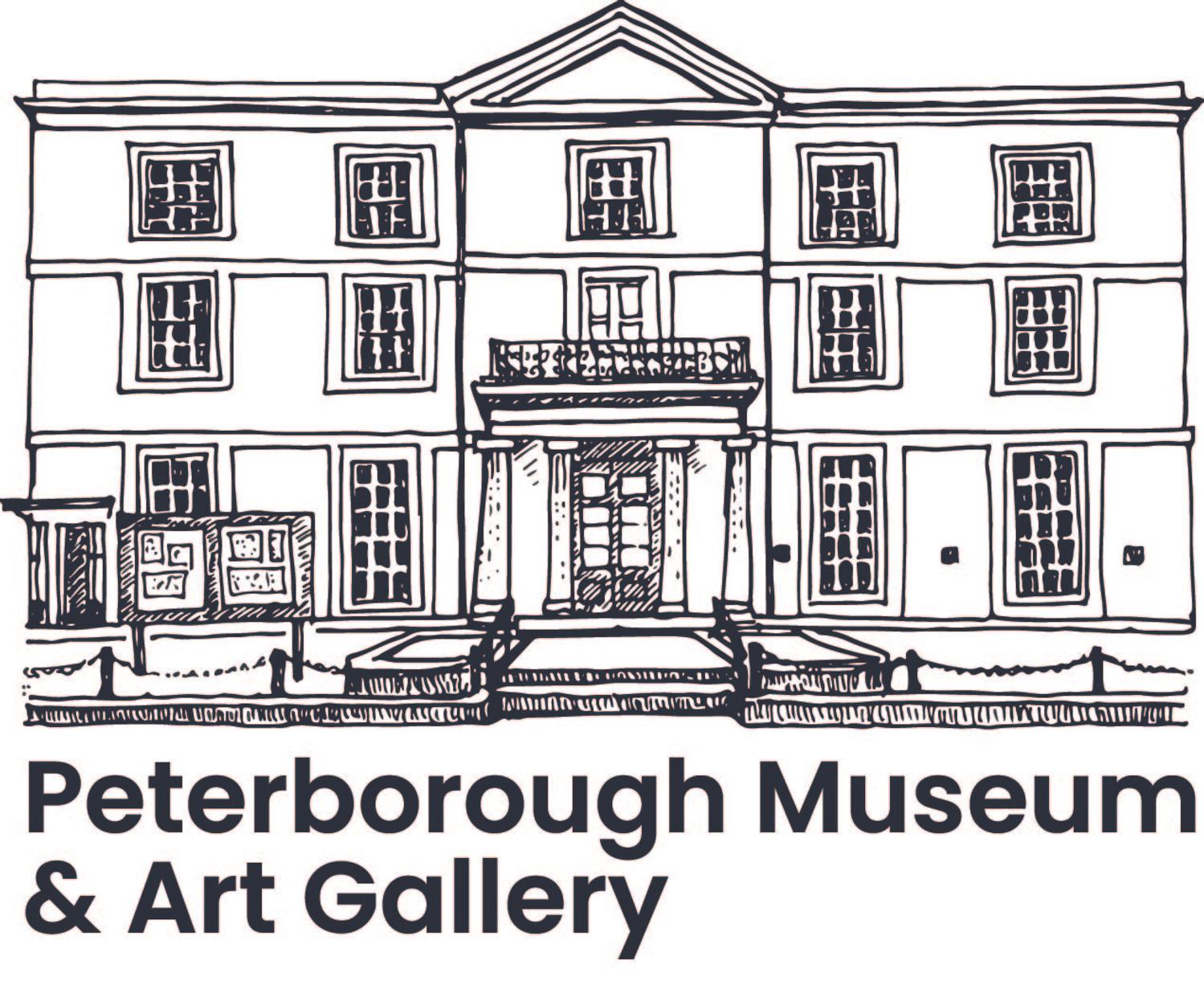Norman Cross
Tuesday 29 August 2023
The Napoleonic Prison Camp at Norman Cross
The First Purpose Built Prisoner of War Camp
The first inmates arrived at the Norman Cross Prisoner of War Camp in 1797, which was the first purpose built camp of its kind. Its location was chosen because it was within reach of London, close to the Great North Road and accessible from a river, but deemed too difficult to escape from easily. It was built primarily of timber in the style of an artillery fort and divided into quadrangles which contained barracks for the prisoners.
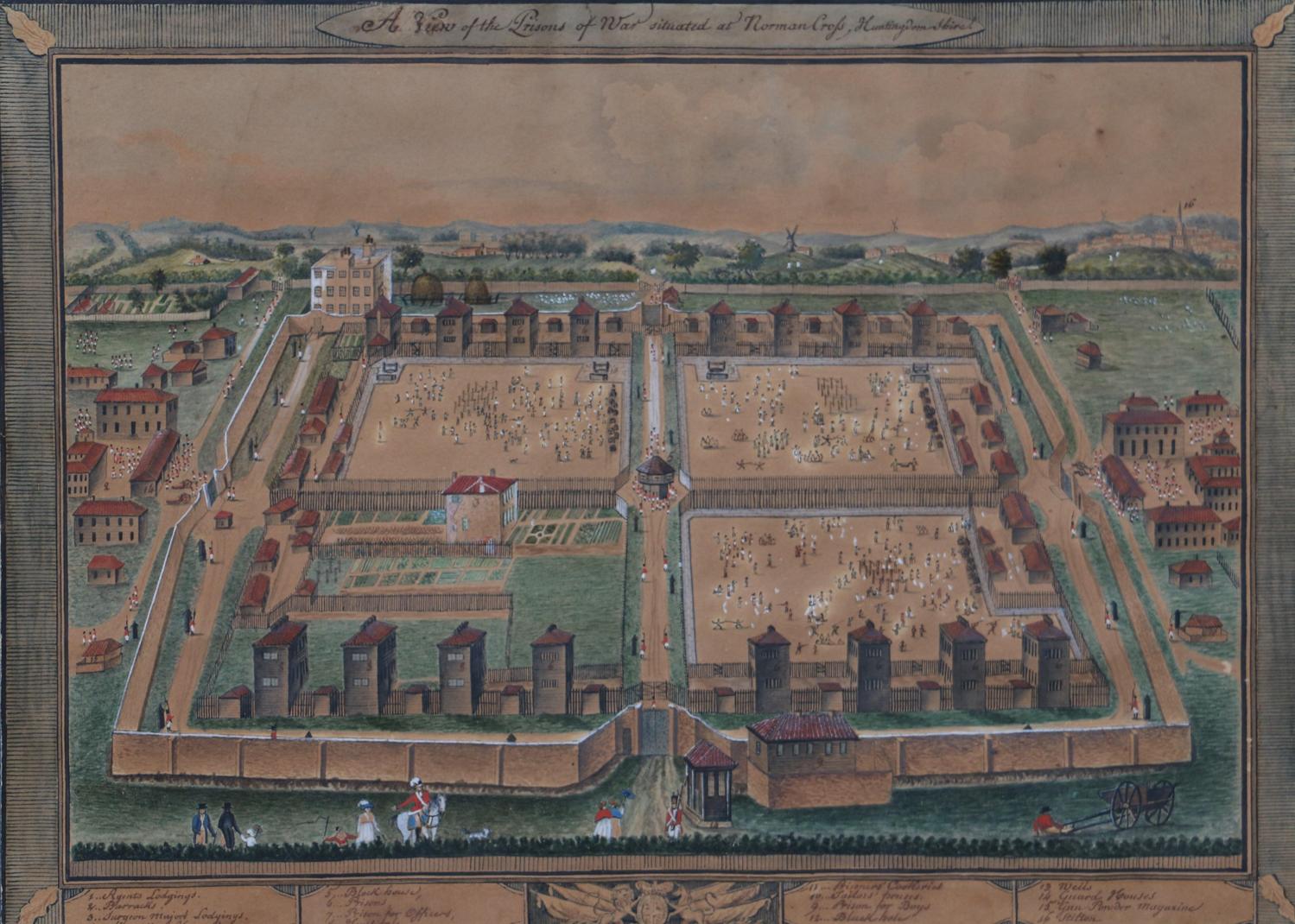
A View of the Prisons of War Situated at Norman Cross, Huntingdonshire. ©Peterborough Museum & Art Gallery
During the Napoleonic Wars and at its height, it housed over 6,000 low-ranking soldiers and sailors from France, Belgium and the Netherlands, which dwarfed the population of Peterborough. Higher ranking and well-respected officers paroled outside the camp, mostly in Peterborough and local towns and were free to live as citizens. The camp was not designed as a correctional facility, so there was the chance for prisoners to make and sell goods locally, get access to education and entertain themselves with a theatre, drinking and gambling.
All of the buildings and equipment were auctioned off in 1816 a couple of years after the end of the Napoleonic Wars. Many fine examples of the delicate bone, wood and straw work objects created by the prisoners to earn money can be viewed in Peterborough Museum in an interactive gallery dedicated to the Norman Cross prison.
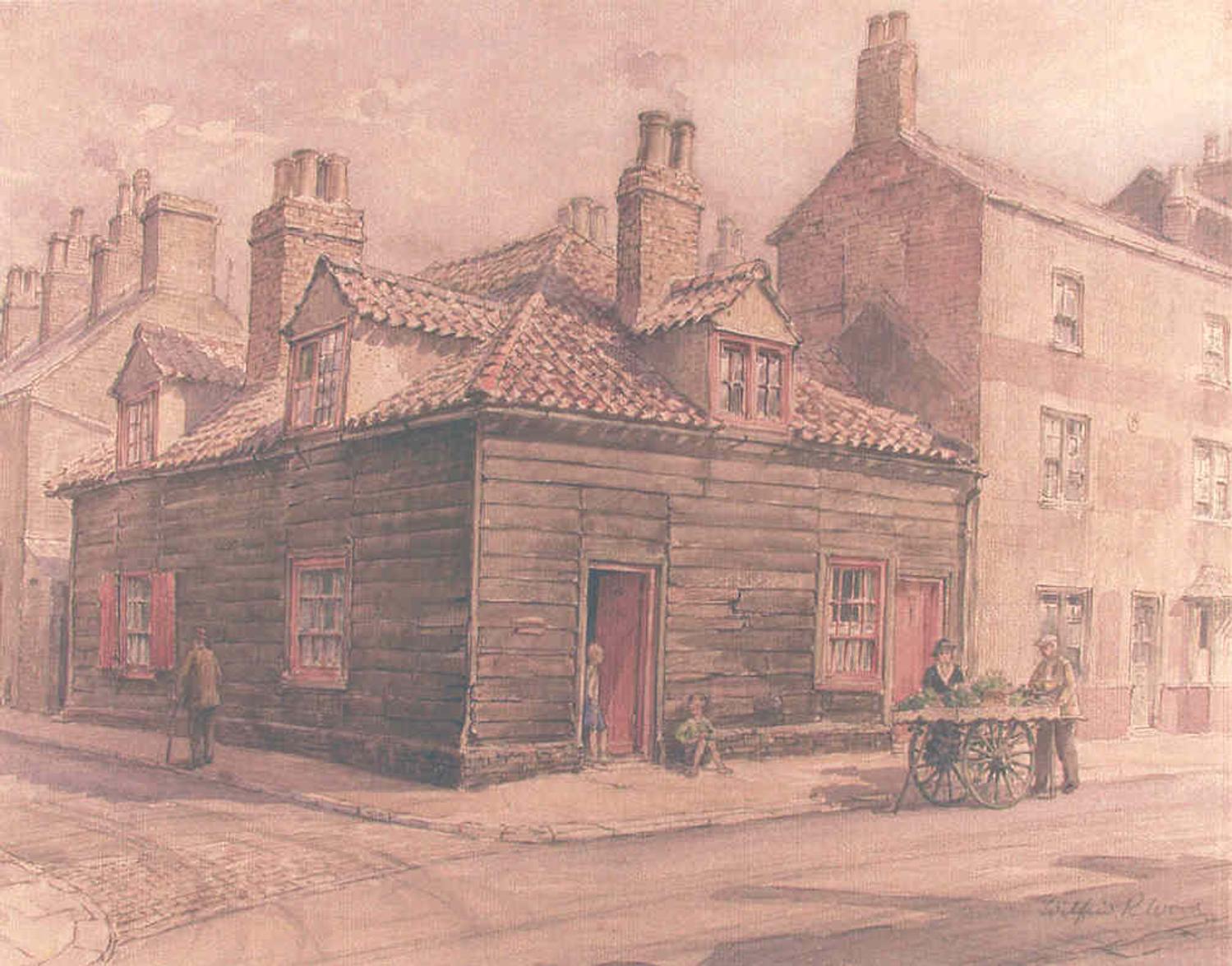
St. Leonard's Street, by Wilfred R Wood. Watercolour and Pencil, 1944. ©Peterborough Museum & Art Gallery
Horse Hair Rings
The Norman Cross prison of war camp dated from 1797 until 1815 and was home to prisoners from the Napoleonic War from France, Belgium and The Netherlands. Although the main camp was dismantled and sold at the end of the conflict, many objects have remained from the camp. These are usually items that the prisoners crafted out of wood, straw and bone, which they sold in local markets or to dealers. The objects are often beautifully detailed and related to the lives of the people who made them, or their intended market.
A more unusual source of material used for making items was horsehair and several examples of horsehair rings have survived. They vary in style and complexity and the coarse hair is often embroidered over with names and mottoes. A set of three/four rings shows three different colours in use and one of the rings has the name Ellen embroidered on it. One ring has a bone structure and is covered in brown horse hair, another is divided into 5 strands and is finely embroidered. Colours used include red, white, brown, yellow and black.
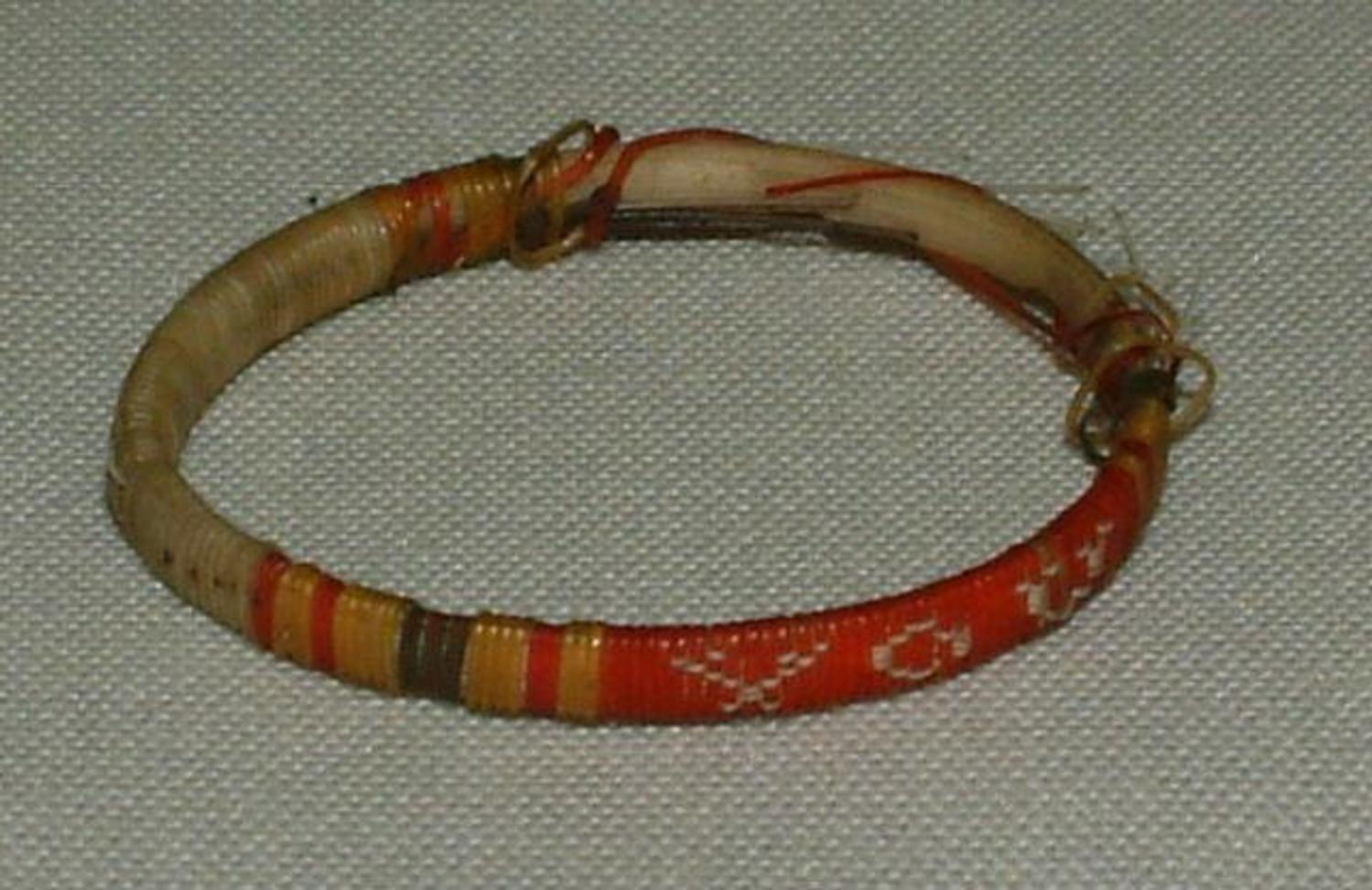
Small horse hair finger ring, incomplete. ©Peterborough Museum & Art Gallery
Permission to Walk
Amongst the Norman Cross collection are several documents relating to the camp and people who were connected to it. Some of the documents relate to the land, others to staff or the detainees.
One document has survived that relates to prisoner A.R.R.Roelans, who was likely to have been Belgian. He was given dispensation to walk the Great Turnpike Road to within a mile of Peterborough. The prisoner of war camp was five miles away from Peterborough and his walk would have taken him just south of Fletton.
Why he was granted permission to walk in this location is not stated, but the document was created on 17th November 1797 within the first year of the camp. The Great Turnpike was what we now call the A15 and is the road that connects the A1 Great North Road to Peterborough. It was possible that he was allowed to walk away from the camp to sell goods that he made and for which the camp was best known, but it may have been the case that the best pub was within that four mile walk!
The Norman Cross Memorial
"It was a great day for the L'Entente Cordiale Society on Tuesday, when the memory of - prisoners who lie at Norman cross was perpetuated by both the French and English nations by the erection of a Mortuary Pillar by the side of the Great North Road-. The monument, which is French in its character of design, bears aloft the French Eagle - mournful, sorrowful, in so far as it is possible for a clever sculptor to convey..." an extract from the Annual Report of the Peterborough Natural History, Scientific and Archaeological Society.
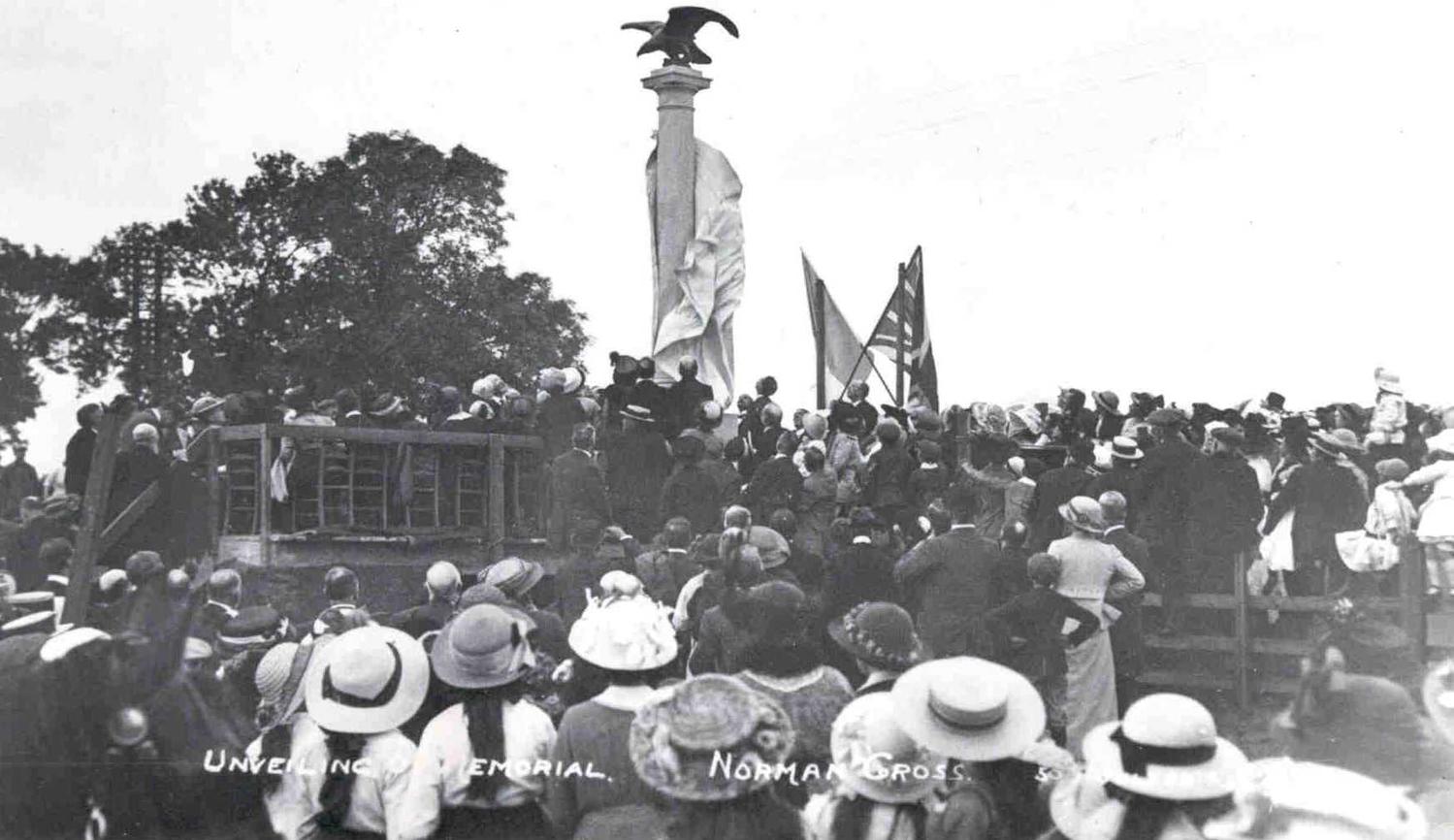
Unveiling the Norman Cross Memorial by the "Entente Cordiale Society", 28.07.1914. ©Peterborough Museum & Art Gallery
The date of this photograph and what is symbolises is particularly poignant as the first shots of WW1 would be fired this day, around midnight as three ships of the Danube Flotilla opened fire on Belgrade. One hundred years after the defeat of Napoleon and the occupation of Paris, Europe was once again plunged into conflict, however now as in this photograph Britain and France would stand together.
The Norman Cross Monument would eventually be moved closer to the boundaries of the camp during the widening of the A1 road, and in 1990 would be toppled and the bronze eagle remove by thieves. A successful campaign to repair the monument concluded in 2005 with the inauguration of the new eagle by the 8th Duke of Wellington.
Dr T.J.Walker and the Museum Connection
Dr Thomas James Walker was born in 1835 in Peterborough and was a second generation doctor. He had a thriving practice in Westgate, and in 1862 he was appointed to the post of surgeon at the infirmary, a post he held until 1906.
His work in the infirmary included pioneering research and exploration into laryngoscopies. He had studied laryngology in Vienna and whilst working in Peterborough wrote a series of articles on laryngoscopy in the British Medical Journal.
The building of the operating theatre at Peterborough Infirmary was facilitated by a grant that Thomas Walker secured. As a surgeon at the infirmary he ensured the operating theatre was built to his specification, with tiled walls that could be easily cleaned with carbolic acid to minimise infection, and lots of natural light, to reduce the need for gas lamps.
He had other interests, notably local history and his archaeological finds and acquisitions formed a base for the Peterborough Museum Society collection, and he became the society's president in 1892. He was also interested in the Napoleonic prisoner of war camp at Norman Cross and wrote a book on its history, published in 1913. As all of the notable men in the city were at that time, including his colleague Dr Comissiong, he was also a member of the Freemasons and Rifle Volunteer Corps.
In recognition of all his contributions to Peterborough and its inhabitants, on his 80th birthday in 1915, he was granted the Freedom of the city, the first native born Peterborian to be so honoured. He died in 1916.

Presentation of the Freedom of the City to Dr. Walker, September 1915. ©Peterborough Museum & Art Gallery
Reference
M.Thomas, Thomas James Walker (1835-1916): Surgeon and General Practitioner, Journal of Medical Biography, Vol 26:1, 2018 DOI
https://doi.org/10.1177/0967772016637973
